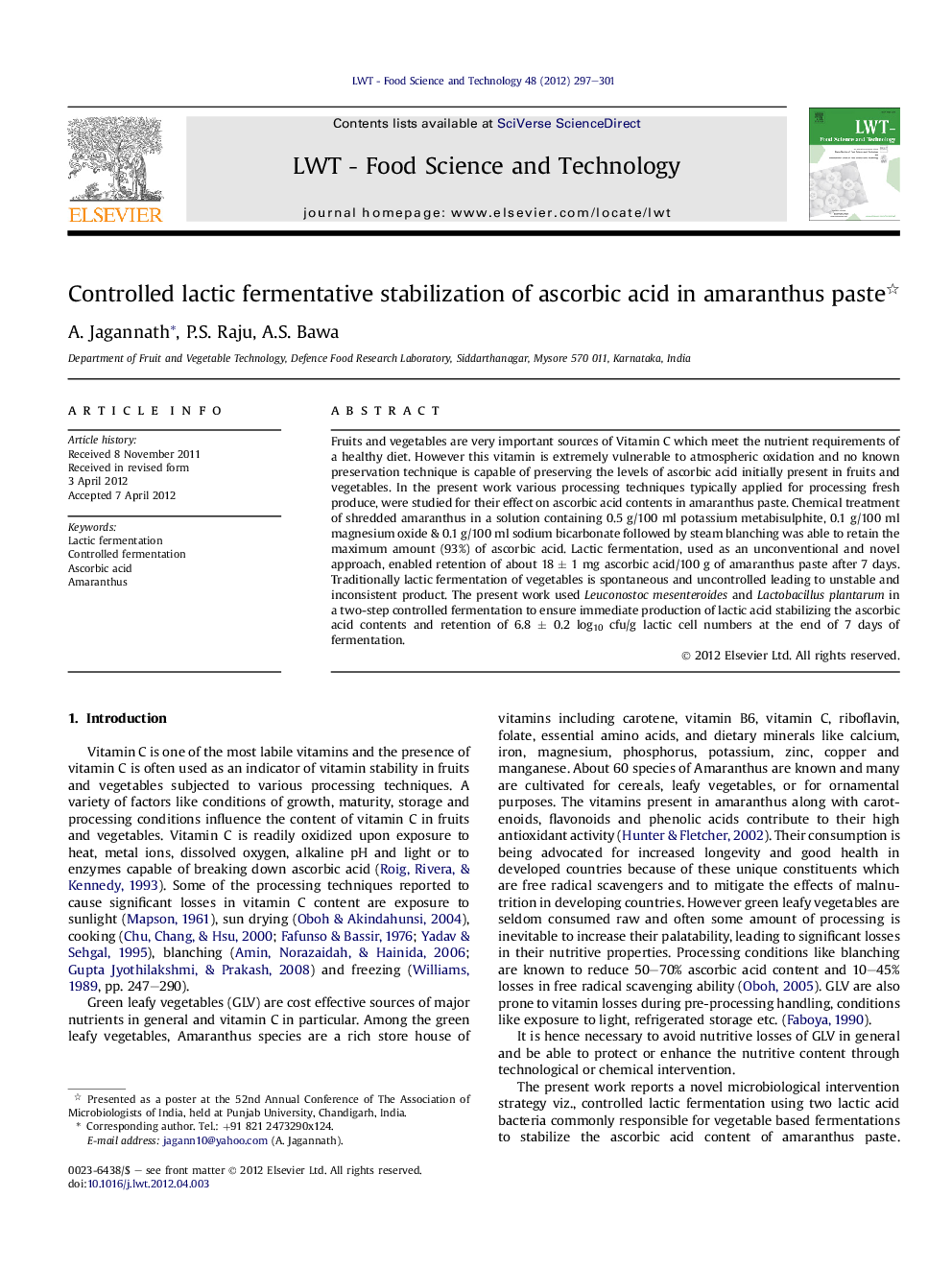| Article ID | Journal | Published Year | Pages | File Type |
|---|---|---|---|---|
| 6405302 | LWT - Food Science and Technology | 2012 | 5 Pages |
Fruits and vegetables are very important sources of Vitamin C which meet the nutrient requirements of a healthy diet. However this vitamin is extremely vulnerable to atmospheric oxidation and no known preservation technique is capable of preserving the levels of ascorbic acid initially present in fruits and vegetables. In the present work various processing techniques typically applied for processing fresh produce, were studied for their effect on ascorbic acid contents in amaranthus paste. Chemical treatment of shredded amaranthus in a solution containing 0.5 g/100 ml potassium metabisulphite, 0.1 g/100 ml magnesium oxide & 0.1 g/100 ml sodium bicarbonate followed by steam blanching was able to retain the maximum amount (93%) of ascorbic acid. Lactic fermentation, used as an unconventional and novel approach, enabled retention of about 18 ± 1 mg ascorbic acid/100 g of amaranthus paste after 7 days. Traditionally lactic fermentation of vegetables is spontaneous and uncontrolled leading to unstable and inconsistent product. The present work used Leuconostoc mesenteroides and Lactobacillus plantarum in a two-step controlled fermentation to ensure immediate production of lactic acid stabilizing the ascorbic acid contents and retention of 6.8 ± 0.2 log10 cfu/g lactic cell numbers at the end of 7 days of fermentation.
⺠Ascorbic acid is lost from amaranthus paste during different processing techniques. ⺠Controlled lactic fermentation can stabilize ascorbic acid in amaranthus paste. ⺠Fermented amaranthus paste retains live bacterial cells and higher ascorbic acid.
